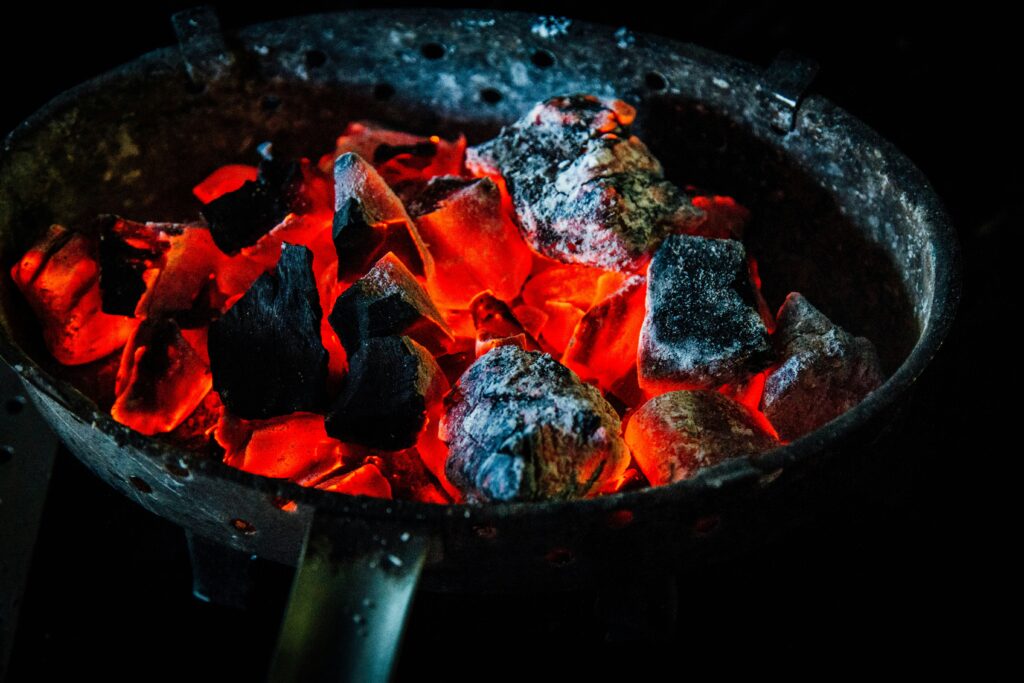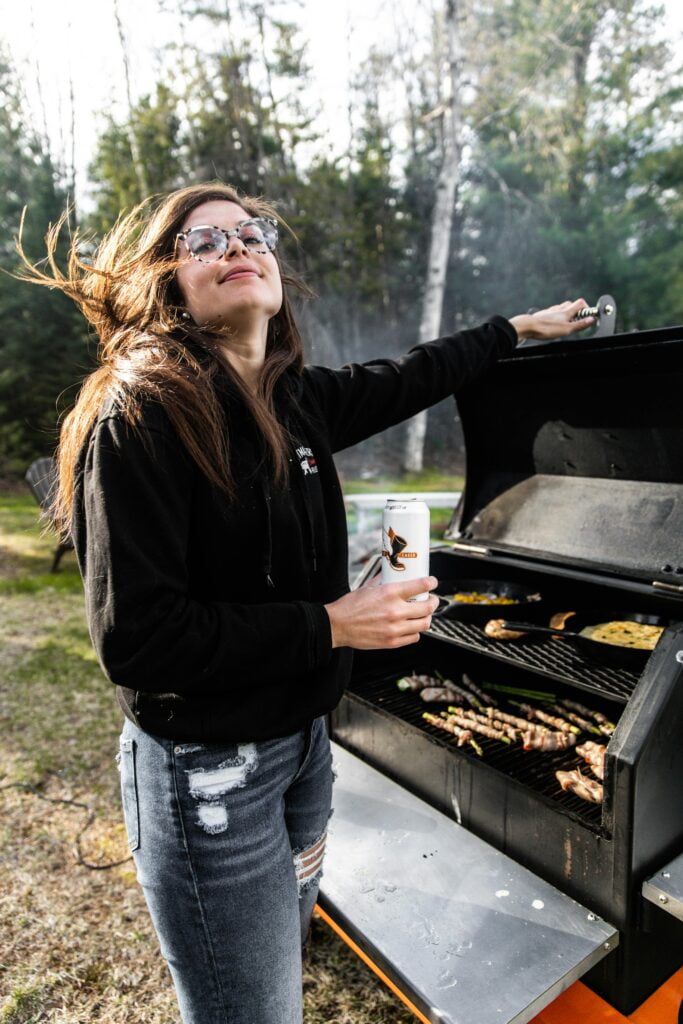Have you ever wondered how long it takes to assemble a barbeque grill? Well, the time it takes may vary based on the complexity of the grill and your experience with assembling such equipment. From simple portable grills to high-end models with intricate features, the assembly process could range from a quick and easy task to a more time-consuming endeavor. In this article, we will explore the factors that can influence the time it takes to assemble a barbeque grill, as well as provide some helpful tips to streamline the process and ensure that you can start enjoying delicious grilled meals in no time. So, let’s get grilling!

Understanding the Basics of BBQ Grills
When it comes to outdoor cooking, BBQ grills are a popular choice for many people. Whether you are hosting a backyard cookout or simply grilling a meal for yourself, understanding the basics of BBQ grills is essential. In this article, we will discuss the different types of BBQ grills, their key components, and important safety measures to keep in mind.
Types of BBQ Grills
BBQ grills come in various types, each offering its own unique features and benefits. The most common types of BBQ grills include charcoal grills, gas grills, and electric grills.
Charcoal grills are known for providing a smoky flavor to your food. They use charcoal briquettes or lump charcoal as fuel, which are ignited to produce heat. Charcoal grills are versatile and come in different sizes, making them suitable for various outdoor cooking needs.
Gas grills, on the other hand, use propane or natural gas as a fuel source. These grills offer convenient fuel control and faster heating compared to charcoal grills. Gas grills usually come with multiple burners, allowing for different temperature zones and cooking methods.
Electric grills are a great option for those who do not have access to gas or charcoal. These grills are easy to use and plug into an electrical outlet. While they might not provide the same authentic smoky flavor as charcoal or gas grills, they are still capable of producing delicious grilled dishes.
Key Components of BBQ Grills
Regardless of the type, BBQ grills share common key components that contribute to their functionality. These components include the legs and wheels, firebox, charcoal tray or gas burners, cooking grates, side burners and shelves, and the grill lid.
The legs and wheels provide stability and portability to the grill. They allow you to move the grill around your outdoor space or transport it to different locations.
The firebox is the main compartment of the grill where the heat is generated. In charcoal grills, it holds the charcoal or briquettes, while in gas grills, it contains the gas burners.
The charcoal tray or gas burners are responsible for producing the heat necessary for cooking. In charcoal grills, the charcoal tray holds the charcoal or briquettes, while in gas grills, the gas burners distribute the flame evenly.
The cooking grates are where you place your food to grill. They come in various materials such as cast iron, stainless steel, or porcelain-coated steel. The choice of cooking grates depends on your personal preference and the type of food you plan to grill.
Side burners and shelves are additional features that some BBQ grills offer. These provide extra cooking space or a place to store utensils and ingredients while you grill.
The grill lid plays a crucial role in maintaining the heat and enhancing the flavors of your food. It helps distribute the heat evenly and allows for better temperature control.
Safety Measures
While assembling and using BBQ grills, it is essential to prioritize safety. Here are some important safety measures to keep in mind:
Always read the assembly manual and follow the manufacturer’s instructions carefully. This will ensure that you assemble the grill correctly and safely.
Wear appropriate protective gear, such as gloves and safety glasses, to protect yourself from potential hazards during the assembly process.
Make sure to assemble the grill in a well-ventilated and open area. Grilling should always be done in a safe outdoor space away from flammable materials.
Use the right tools for assembly and follow proper techniques. Using tools not intended for the task can result in accidents or damage to the grill.
Double-check the assembly to ensure all parts are securely attached. Loose parts or components can cause instability and safety hazards during grilling.
By following these safety measures, you can enjoy a safe and enjoyable grilling experience.
Pre-Assembly Preparations
Before diving into the assembly process, there are a few important preparations you need to make. These preparations will ensure a smooth assembly and help you avoid unnecessary delays or mistakes.
Reading the Assembly Manual
The assembly manual is your go-to guide for successfully putting together your BBQ grill. Take the time to carefully read through the manual before starting the assembly process. Familiarize yourself with the diagrams, parts list, and step-by-step instructions provided. Understanding the manual will give you a clear idea of what to expect during the assembly and help you avoid common mistakes.
Identifying and Organizing Parts
Once you have a good grasp of the assembly manual, it’s time to identify and organize the parts. Lay out all the components of your BBQ grill and sort them according to their respective categories. This will make it easier to locate the parts as you progress through the assembly process. Check if all the necessary parts are present and accounted for, and notify the manufacturer if anything is missing.
Preparing Necessary Tools
Having the right tools on hand is crucial for a smooth assembly process. Refer to the assembly manual to see the list of tools required. Gather all the necessary tools, such as screwdrivers, wrenches, and pliers, beforehand. This will save you time and frustration during the assembly, allowing you to focus on the task at hand.
The Assembly Process
Now that you have completed the pre-assembly preparations, it’s time to dive into the assembly process. Follow the steps outlined in the assembly manual, and take your time to ensure each part is installed correctly.
Attaching the Legs and Wheels
Begin the assembly process by attaching the legs and wheels to the base of the grill. Most grills come with pre-drilled holes or brackets that make this step relatively straightforward. Use the appropriate tools to secure the legs and wheels firmly in place, ensuring stability and easy maneuverability.
Fixing the Firebox
Next, focus on fixing the firebox, the central component of the grill where the heat is generated. If you have a charcoal grill, carefully position the firebox and secure it according to the instructions provided. For gas grills, attach the gas burners to the firebox, making sure they are properly aligned.
Installing the Charcoal Tray or Gas Burners
For charcoal grills, the next step involves installing the charcoal tray. Follow the manual’s instructions to position the tray correctly and ensure it is securely fastened. If you have a gas grill, connect the gas burners to the firebox, making sure all the gas connections are properly sealed.
Assembling the Cooking Grates
The cooking grates are an essential part of any BBQ grill, as they provide the surface on which you cook your food. Depending on the type of grill you have, follow the manual’s instructions to assemble the cooking grates. Ensure they fit securely and are level.
Fitting Side Burners and Shelves
If your BBQ grill includes additional features such as side burners and shelves, now is the time to install them. Carefully attach and secure these features according to the manual’s instructions, ensuring they are stable and functional.
Setting Up the Grill Lid
The final step in the assembly process is setting up the grill lid. Attach it securely to the grill, making sure it closes and opens smoothly. The grill lid helps maintain the heat and ensures even cooking, so it’s crucial to ensure it is properly fitted.
Average Time to Assemble a BBQ Grill
The time it takes to assemble a BBQ grill can vary depending on various factors. Let’s explore the factors that can affect assembly time and the typical timings for different grill types.
Factors Affecting Assembly Time
The complexity of the grill design, the number of components, the availability of clear instructions, and your familiarity with assembly can all affect the time it takes to put together a BBQ grill. Additionally, having a helper or assembling the grill with a team can significantly reduce the assembly time.
Typical Time for Different Grill Types
On average, assembling a BBQ grill can take anywhere from one to four hours. Electric grills tend to have the shortest assembly time, typically taking around one to two hours. Gas grills and charcoal grills can take slightly longer, with assembly times ranging from two to four hours. However, it’s important to note that these are just rough estimates, and individual assembly times can vary.

Professional Assembly Services
While many people enjoy the process of assembling their BBQ grill, others prefer the convenience of having it professionally assembled. Let’s explore the benefits of professional assembly, the associated costs, and how to find a good assembly service.
Benefits of Professional Assembly
Opting for professional assembly offers several benefits. Firstly, it saves you time and effort, as experts can assemble the grill efficiently. This is especially useful if you have a busy schedule or limited experience with grill assembly. Secondly, professional assembly ensures that the grill is put together correctly, minimizing the risk of mistakes or faulty assembly. Lastly, some assembly services offer warranties or guarantees for their work, providing additional peace of mind.
Cost of Professional Assembly
The cost of professional assembly services can vary depending on various factors, including the type of grill, the complexity of assembly, and the location. On average, professional assembly services for BBQ grills can range from $50 to $200. It’s advisable to research and compare different service providers to find one that fits your budget and offers reliable service.
How to Find a Good Assembly Service
To find a good assembly service for your BBQ grill, consider the following steps:
Ask for recommendations from friends, family, or neighbors who have recently used professional assembly services. Their firsthand experiences can provide valuable insights.
Research online and read customer reviews for various assembly services in your area. Look for providers with positive feedback and a reputation for quality service.
Contact potential assembly services and inquire about their experience, pricing, and any guarantees or warranties they offer. Ask if they have experience assembling the specific brand and model of your BBQ grill.
By conducting thorough research and considering customer feedback, you can find a reliable assembly service that meets your needs.
Common Mistakes during Grill Assembly
During the assembly process, it’s important to avoid common mistakes that can lead to issues or safety hazards. Let’s explore some of these mistakes and how to prevent them.
Not Reading the Instructions
One of the most common mistakes is failing to read the assembly instructions thoroughly. Skipping or skimming through the manual can result in missed steps or incorrectly assembled components. Take the time to read the instructions carefully and familiarize yourself with each step before proceeding.
Misplacement of Parts
Misplacing parts or using incorrect components can lead to issues with stability or functionality. To avoid this mistake, organize and sort the parts before assembly. Double-check each component against the parts list provided in the manual to ensure everything is in order.
Ignoring Safety Precautions
Safety should always be a top priority during grill assembly. Ignoring safety precautions can result in accidents or injuries. Be sure to follow the safety measures outlined in the assembly manual, wear appropriate protective gear, and assemble the grill in a suitable environment.

Safety Tips during the Assembly
Assembling a BBQ grill safely requires attention to detail and proper techniques. Here are some safety tips to keep in mind throughout the assembly process:
Using the Right Tools
Using the correct tools for assembly ensures that you can tighten screws, secure parts, and follow the manufacturer’s instructions effectively. Avoid using tools not intended for the task as they may damage the components or compromise safety.
Working in a Suitable Environment
When assembling your BBQ grill, choose a well-ventilated area with ample space and a stable surface. Ensure that there are no flammable materials nearby and that you have sufficient lighting. Working in a suitable environment reduces the risk of accidents and allows for better concentration.
Assembling with Proper Posture and Techniques
Maintaining proper posture and using correct assembly techniques is crucial for avoiding strain or injuries. Lift heavy parts with your legs, not your back, and avoid awkward or uncomfortable positions. Take breaks if needed and listen to your body to prevent fatigue.
Double Checking Assembly
Before using your assembled grill, double-check all the parts and connections to ensure everything is securely fastened. Loose or improperly assembled components can lead to accidents or stability issues during grilling. Take the time to verify the assembly and make any necessary adjustments.
Efficiency Tips for Faster Assembly
If you want to streamline the assembly process and save time, consider implementing these efficiency tips:
Preparing Ahead
Review the assembly manual and gather all the necessary tools and equipment before starting the process. Having everything ready beforehand prevents unnecessary interruptions or trips to fetch missing items.
Following the Assembly Manual
The assembly manual provides step-by-step instructions for a reason. Follow the manual closely, paying attention to diagrams, part numbers, and instructions. This will help you avoid mistakes and ensure smooth progress throughout the assembly.
Staying Organized
Keep the parts organized and sorted throughout the assembly process. This will prevent confusion and help you locate the required components easily. Proper organization saves time and ensures you don’t misplace or overlook any important parts.
Post-Assembly Check and Testing
Once you have successfully assembled your BBQ grill, it’s important to perform a post-assembly check and test to ensure everything is in working order.
Checking for Stability
Inspect the grill for stability by gently rocking it from different angles. Ensure that the legs and wheels are firmly attached and that the grill does not wobble or tip over. A stable grill is essential for safe and steady cooking.
Ensuring Correct Functionality
Test all the components of the grill to ensure they are functioning correctly. Check the gas burners, ignition system (if applicable), side burners, and any other features. Verify that the lids open and close smoothly, and the cooking grates are level and in place.
Performing a Burn-Off
Before cooking on your newly assembled grill, it’s recommended to perform a burn-off to remove any residues or manufacturing substances from the surfaces. Preheat the grill on high heat for about 15-20 minutes, then let it cool before wiping it down. This process prepares the grill for safe and clean cooking.
Maintenance and Care of Assembled Grill
Now that you have successfully assembled and tested your grill, it’s essential to maintain and care for it to prolong its lifespan and ensure optimal performance.
Cleaning the Grill
Regularly clean your grill to remove food debris and grease buildup. This prevents flare-ups and maintains the integrity of the cooking grates. Clean the grates, firebox, and other parts according to the manufacturer’s instructions, using appropriate cleaning tools and solutions.
Fault Identification and Repair
Periodically inspect your grill for any faults or issues. Check for signs of rust, loose parts, or malfunctioning components. If you notice any problems, address them promptly to prevent further damage. Follow the manufacturer’s instructions for any repairs or replacements.
Proper Storage and Covering
When not in use, ensure you store your grill in a dry and sheltered area. Use a grill cover to protect it from the elements and prevent rust or damage. Additionally, cover the cooking grates with foil or store them indoors to avoid rusting.
By following these maintenance practices, you can keep your assembled grill in excellent condition, ensuring it remains reliable and functional for years to come.
In conclusion, understanding the basics of BBQ grills is essential before embarking on the assembly process. By familiarizing yourself with the different types of grills, their key components, and safety measures, you can assemble your grill with confidence. Whether you choose to assemble it yourself or opt for professional assembly services, prioritize safety and follow the recommended guidelines. With proper assembly, care, and maintenance, your BBQ grill will become a reliable companion for enjoyable outdoor cooking experiences.

